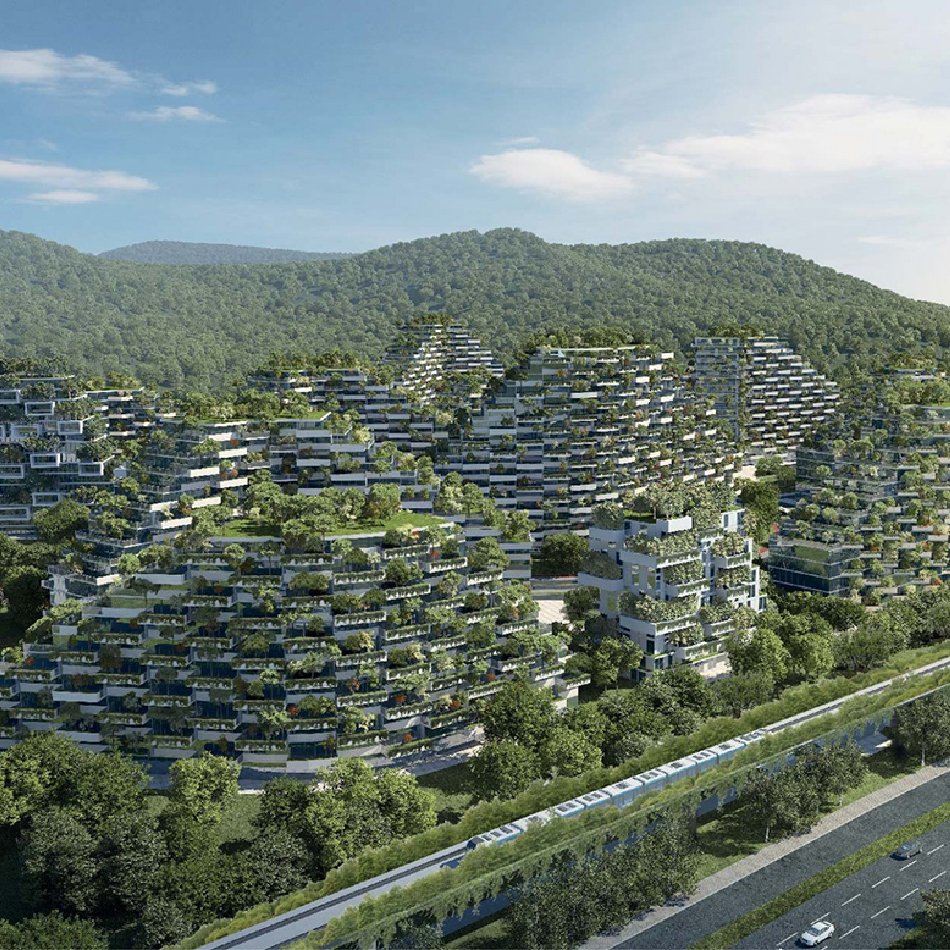
Absorbed by Nature: Architecture That Blurs Distinctions between the Outdoors and the Built Environment
We live in a world increasingly occupied by technology. The way we consume literature, art and entertainment has reduced our reliance on stuff to a bare minimum. The Internet of Things has enabled us to control everything from our central heating to our lighting remotely from the other side of the world, if we so choose, without the bulk of controls and switches.
Those of us fortunate enough to have accumulated space amidst the growing population now have more of it to play with, as a result. For architects, this has created an aesthetic playground in terms of learning how to design for a life less occupied by the bulk of necessity. And it’s a playground that increasingly looks to nature for its inspiration.
Meanwhile, for those of us enmeshed in the compact life of the world’s bustling cities, the resultant minimalism demanded by technology and population growth has driven us to seek out new ways to reconnect with nature in ways previously unavailable amidst the concrete jungle. Thus, creating even more opportunities for the innovators of architecture, keen to meet the growing demand for greener living.
The quietude of private space is, of course, a wonderful thing, but today’s architects are wisely acquiescing to the humanising, pacifying effect of living environments that welcome, rather than battle with, the natural world. And the results, which fuse nature and technology often in ways never before seen within the built environment, can be utterly breath-taking.
Glass Walls, Enclosed Gardens and Outdoor Living Spaces
The most immediate way to create connectivity between nature and the built environment is, of course, to remove the barriers that separate them.
Houses like the Laguna Beach, California home by Horst Architects take away whole walled sections and leave only columns and glass walls in place to give the impression of being outside while inside. Then there are buildings that envelope the outdoor space, such as the Monthon Ville Residence in Bangkok by Ayutt & Associates Design, which blur the distinction between outdoors and indoors by allowing both to occupy the main living space. Others, like the Blue Sail house in Los Angeles by Ehrlich Yanai Rhee Chaney Architects, completely open up the living space so that it spills out into the open almost without interruption when the sliding panels are removed.
Each of these buildings serves to give the dweller an equal dose of luxurious security and rootsy outdoorsiness that charms as much as a result of its reliance on the landscape as it does from the magnificence of its design.
Plant covered buildings
The most awe-inspiring constructions, however, at least from an external perspective, are arguably the plant covered buildings that seem almost as if they sprung up with the foliage that covers them over the past decade or so. Buildings like the Rosewood Tower in São Paulo or (in particular) the forthcoming Liuzhou Forest City in China, which is currently in development, feel like strange spores of the earth that impose without rudely interrupting.
Then there are constructions that have begun to welcome vertical gardens, like that of the beautifully disruptive Oasis of Aboukir in Paris or the East Village apartment block and art gallery in Beirut, which was designed to incorporate its own living wall. These buildings stop us in our tracks, momentarily removing us from the machinery of the cityscape and allowing us to celebrate the simple glory of nature.
Psychological, Aesthetic, Health and Ecological Impacts
Of course, it’s not just the aesthetic implications of this latter group of constructions that drive today’s architects to design them. There is, clearly, also an environmental motivation at root, if you’ll excuse the pun.
In their essay, Ecological-Social-Economical Impacts of Vertical Gardens in the Sustainable City Model, Horticulturalists Gülçinay Başdoğan and Arzu Çığ argue that green plants in workplaces can reduce employee absenteeism by 5%-15% and that vertical gardens can not only reduce the heart rate and stress of those who experience them, but also lessen the amount of volatile organic compounds that lead to the symptoms of Sick Building Syndrome, such as eye, nose, skin and throat irritations, along with headaches, fatigue and skin rashes.
They also point to the distinct reduction of Urban Heat Island Effect as a result of evapotranspiration or water loss from the plant life of vertical gardens, which in turn reduces reliance on environmentally unfriendly air conditioning. Not to mention the improvement in air quality due to the filtering of chemical particles through plant life and the increased oxygen levels.
Just one such dispatch from the world of science is surely worth a thousand critical plaudits from the world of architectural journalism. For it means that the architects of these new, green buildings are achieving not merely something beautiful to behold, but, in fact, new ways of confounding the onslaught of climate change, if only momentarily. Which is where the profession truly breaks free from the boundaries of its job description to join the vanguard of the sustainability movement.